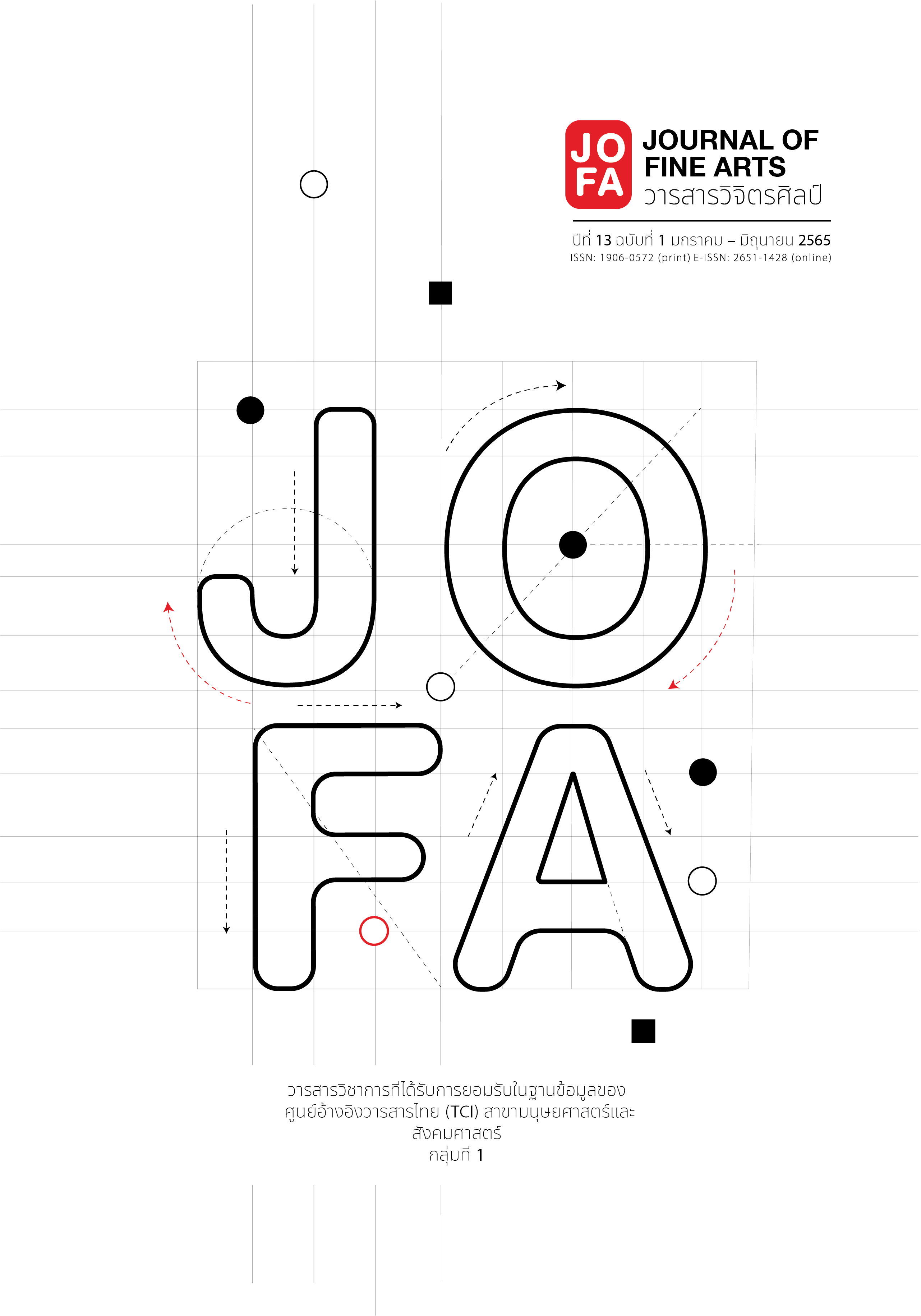Animation from Phra Ubosot Wat Suwannaram Ratchaworawihan mural
Main Article Content
Abstract
This research project has 2 objectives, which are 1) to study and analyze on the contents, stories and forms used for the creation of the murals of the Chapel of Suwannaram Ratchasorawihan Temple, Bangkok; and 2) to disseminate and conserve the story of Lord Buddha from the murals of the Chapel of Suwannaram Ratchasorawihan Temple, using 2D combined animation media.
The finding of the study show that the position of each part of the murals in the Chapel has deem significant and related to the principal Buddha image in the Chapel. The murals can be roughly divided into 4 main groups, namely, 1) Mahanipata Jataka (the 10 significant past lives of Lord Buddha), 2) story of life of Lord Buddha, 3) the congregation of angels and 4) doorway guardians. The murals in the groups of Mahanipata Jataka and the life story of Lord Buddha depict many stories or event in a picture whilst the murals in the groups of the congregation of angels and doorway guardians depict only gestures during a moment of time. Also, the compositions of the murals in the groups of Mahanipata Jataka and the life story of Lord Buddha will depict stories that do not follow time or incident order. Thus, viewers of these murals who have never known the stories before will not understand the murals at all. When the animation work entitled “Temiya Jataka” is created from the data collected from the murals in the Chapel of Suwannaram Ratchasorawihan Temple, and presented to the public, the findings are as follows. The satisfaction to the work in the aspect of ‘the appropriateness of the content’ has the highest mean, which is 4.48 which falls in the high level. Meanwhile, the aspect of ‘the appropriateness of sound/audio’ has the lowest mean, which is 4.19 which falls in the high level. The audience have satisfaction in high level to all aspects of the work.
Article Details

This work is licensed under a Creative Commons Attribution-NonCommercial-NoDerivatives 4.0 International License.
References
Nathaponson.“Čhitakamfāphanang Watsuwannārām Petchnāmngāmčhitakamthai Samairattanakōsin. [ Mural “Wat Suwannaram” Petch Nam Ngam Thai Painting Rattanakosin period].” Madchima. Accessed October 31, 2019. http://www.madchima.org/forum/index.php?topic=11577.0.
No Na Paknam. (pseud.) Čhitakamfaphanang Watsuwannaram. [Wat Suwannaram: Mural Paintings of Thailand Series]. Bangkok: Muang Boran, 1997.
Office of the Royal Society. Photčhananukrom Chabap Ratchabanthittayasathan Phō̜.Sō̜. 2554. [Royal Institute Dictionary 2011]. Bangkok: Office of the Royal Society, 2013.
Sriamphai, R. “Khwāmtǣktāngdānkhatirawāng Čhitkamfāphanangphāpthēpchumnum Naiphrathīnangphutthaisawan Phiphitphanthasathānhǣngchāt Phranakhō̜n kap Phāpthēpchumnum Naiphraʻubōsotwatsuwannārām Khētbāngkō̜knoi. [Conceptual Difference Between The Celestial Assembly Mural Paintings Found In The Phutthaisawan Chapel, National Museum And Those In Wat Suwannaram’S Ordination Hall, Bangkok Noi].” Master’s thesis, Silpakorn University, 2006.
Thumthaweenun, C. “Kānʻō̜kbǣp Phāpphayon ʻĒnimēchan Phư̄a Sadǣng ʻAttalak Phư̄n Thin Rư̄ang Phayā Meng Rāi. [Film animation design to show endemic on Phaya Meng Rai].” Master’s thesis, Silpakorn University, 2011.
Whattananarong, K. “Kānchai Phāpphayon Animation Rư̄ang “Phraphutthačhao” Phư̄a Phœ̄m Khwāmrū Dān Phutaprawat. [ Use of animation film on “The Buddha” for enhancement knowledge of the buddha history].” The Journal of King Mongkut’s University of Technology North Bangkok 22, no. 74 (2010): 48.


